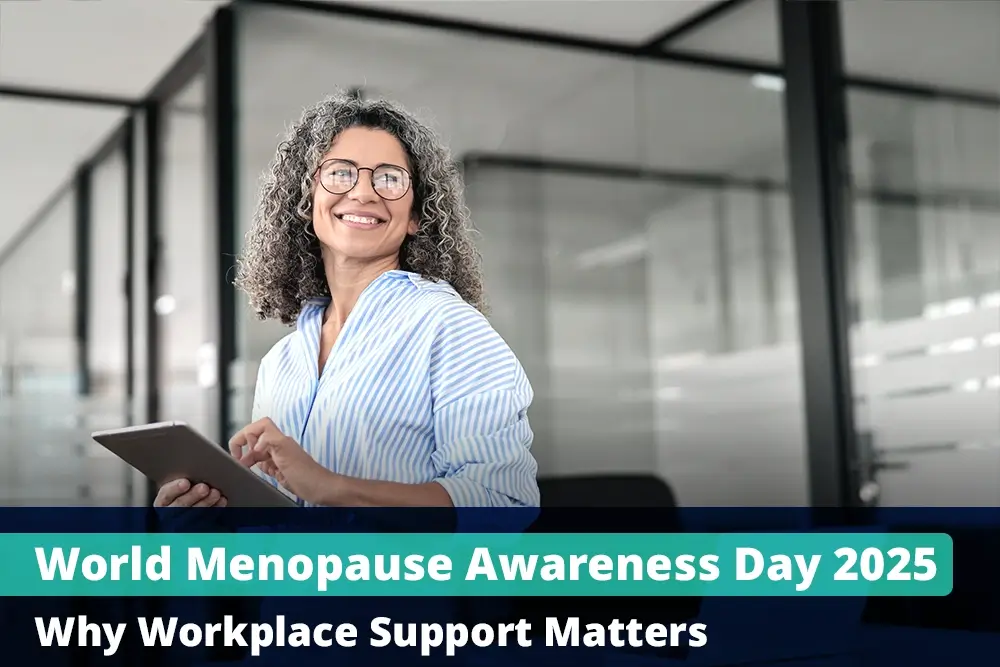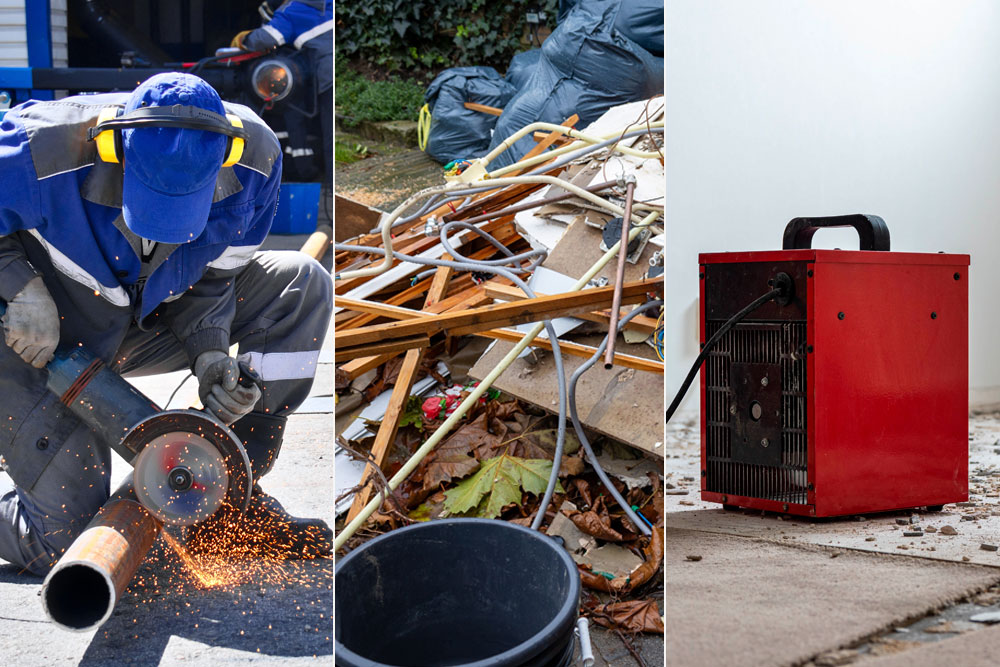
Long-term health risks can often be easy to ignore at first, but the problems they develop are often chronic, and can even be incurable. Certain ailments can be treated if they are caught early, and one of them is the Hand-Arm Vibration Syndrome (HAVS).
What is Hand Arm Vibration Syndrome?
Nearly two million people are at risk of developing HAVS, according to the Health and Safety Executive (HSE). If you are unfamiliar with the term, HAVS refers to a variety of debilitating symptoms that develop after continued exposure to vibration. This generally occurs through the use of hand-held tools and equipment that vibrate.
HAVS symptoms include pain in the hands, lost dexterity and the inability to grip items. These health issues are both physically and psychologically challenging.
Once HAVS has developed there is little treatment available that will help. However, if this condition is diagnosed at an early stage, there are chances of some recovery.
This makes HAVS a perfect example of why we need occupational health and safety. With the right training and precautions in place, the illness caused by HAVS are completely avoidable. Nobody needs to find themselves facing this disease.
What Employers Need to Know
If your employees operate vibrating tools and equipment, you must take precautions to ensure that they are protected. The government recognises the risks of vibration, and requires employers to take appropriate action.
By law, a risk assessment on vibration must be conducted and controls put in place to eliminate or reduce this hazard, if necessary.
As part of these controls, adequate health and safety training have to be provided. Employers must provide information to help their workforce understand the hazards they face in their work environment. This information should include safety precautions that have been implemented to control the risk from working with vibrating tools.
It is not only important for employers to ensure this training is provided, they should also ensure it is recorded. This will give them confidence that they have done their duty to protect their staff from ill health. It will also ensure that they are protecting the organisation itself from breaches in the law and liability risk.
What Are the Health Risks of HAVS?
There are three main components to HAVS. These are vascular problems related to a loss of blood flow; nerve damage; and musculoskeletal damage. These conditions usually develop over a period of five to 10 years.
The associated conditions caused by these three include:
White Finger: White finger occurs when vibration causes blood flowing to the fingers to slow or stop. As a result, the fingers turn purple or white. When the blood returns, the fingers often turn red. This can be very painful.
Nerve Damage: If vibration causes the blood to stop flowing to your hands, your nerves can also become damaged. Damaged nerves cannot function as normal, and so stop sending sensory input to your brain.
This means you lose your ability to feel sensations in your hands and are numb to heat, cold, and touch.
This impacts your ability to pick up and handle small items.
Bone and Joint Damage: Vibration also has a direct effect on the structure of the bones and joints in the hands, wrists, arms and elbows.
They can become damaged, or form abnormal bone growths, or cysts, such as at the joints in the fingers.
Muscle Weakening: In addition, vibration can cause muscle cells to grow weak over time. This is what causes the loss in grip strength and manual dexterity.
Carpel Tunnel Syndrome: Nerve compression in the hands caused by vibration creates a condition known as Carpel Tunnel Syndrome. This causes:
- Aching & discomfort,
- A burning, prickling or ‘pins & needles’ sensation,
- A loss of sensitivity in the hands, and Weakness &
- wasting away of muscles at the base of the thumb
Mental Health: The experience of vibration illness can affect mental health. Those with HAVS often cope with ongoing pain and lost sleep due to the pain, as well as the lost ability to work or do certain tasks.
HAVS symptoms will vary depending on the type of work, the level of exposure, and the working environment. But it is well understood that continued, pro-longed exposure over many years will lead to permanent damage and pain.
Who is at Risk
In most cases, vibration exposure occurs from the use of hand-held vibrating tools, such as power saws, grinders, and power trimmers. This puts many of those working in industrial sectors, as well as anyone that uses power tools, at risk.
This may include those who work in:
- Maintenance
- Engineering
- Utilities
- Manufacturing
- Foundries
- Machinery repair
- Road work
- Mines and quarry work
- Utilities
- Estate management
- Forestry
What The Law Says
The Control of Vibration at Work Regulations 2005 provides legal guidance specific to vibration. It requires employers to manage vibration health and safety risks.
If you employ anyone that may be exposed to vibration, you must reduce this exposure. Depending on the level of vibration, this reduction will either be an absolute duty, as far as is reasonably practicable (see below for guidance on action limits).
Exposure to some vibration is an inevitable part of some work tasks. But it is the employer’s duty to assess, monitor and reduce this exposure.
This legislation specifically requires employers to:
- Assess vibration risks
- Eliminate vibration risk at the source, or reduce it to the lowest reasonably practicable level
- Put any other necessary control measures in place to protect people from harm – including health surveillance if necessary
- Monitor if measures are working effectively
In addition, the regulation defines two levels of vibration at which an employer must take-action.
Exposure Action Value (EAV) – This is the daily amount of vibration exposure above which employers are required to take-action to control exposure.
The EAV for HAV is 2.5 m/S² A(8), or 2.5 metres per second averaged over an eight-hour period.
When this limit is reached, an employer must:
- Conduct a Vibration Risk Assessment
- Conduct health surveillance
- Provide employees with information, instruction & training related to vibration,
- Reduce Vibration to the lowest possible level
Exposure Limit Value (LEV) – is the maximum amount of vibration an employee may be exposed to on any single day.
The ELV for HAV is 5 m/S² A(8), or 5 metres per second squared averaged over an eight-hour period.
When ELV is reached work must stop immediately, and the employer is required to:
- Conduct a HAVS Risk Assessment, and
- Immediately reduce vibration exposure below the ELV
Human Focus’ Hand Arm Vibration (HAV) online course provides a full explanation of how to calculate and apply EAV and ELV.
Managing the Risks of HAV
Risk assessment is fundamental to preventing the risks associated with HAVS. A risk assessment is nothing more than a careful examination of anything in the workplace that might cause injury or harm.
The HAVS risk assessment process helps assess if there is a significant risk in the grinding wheel work, and if there is, what safeguards are required.
And so, a vibration risk assessment is a survey of the workplace to identify:
- Equipment likely to generate vibration
- Who may be exposed
- How long they may be exposed
- Equipment manufacturer information & Vibration data
- The effects of vibration on the equipment or environment
- Any working conditions, that will affect vibration risk
As mentioned earlier, Vibration Action Values are how you will determine the extent to which vibration needs to be reduced.
So, an employer should assess what tools and equipment are being used over a given day. If the EAV or ELV are being exceeded, appropriate action must be taken.
It is important to understand that vibration exposure is cumulative.
So, whilst a worker may be unlikely to use the same piece of equipment continuously over eight hours, vibration exposure adds up.
This means that the use of one piece of vibrating equipment on and off over the day, or a switch between multiple pieces of equipment, all counts towards that total safe exposure limit.
Risk Controls for Vibration
The HAVS risk assessment process will determine what controls are necessary to prevent hazardous exposure to vibration. Let’s look at how you might apply the hierarchy of risk controls to vibration.
Eliminate the risk: The first tier of the hierarchy after a HAVS assessment looks for ways to ways to work that eliminate exposure to vibration. This could include automating work. For instance, use a breaker attachment attached to a large machine rather than a hand-held breaker.
Reduce exposure: The next preferred method is to reduce exposure. This means reduce the amount of time exposed or the level of vibration. Ways to do this are to alternate between tasks and take ample breaks in between using equipment.
You may also select and use equipment that vibrates less. Worn out or faulty equipment will be likely to vibrate more, so this should be avoided.
Safe Systems of Work: The next preferred method is safe systems of work. Ways to do this are to provide training on vibration risks to all employees, and on the proper use of vibration equipment.
Recall also that health surveillance is a legal requirement when vibration exposure limits are reached. So, this system must be implemented if necessary.
Personal Protective Equipment (PPE): This is the least preferred method to control exposure. Unfortunately, there are not many options when it comes to PPE.
There are some brands of anti-vibration gloves on the market. But they have shown to have minimal effectiveness, and are only useful for some tasks. Do not rely on these too heavily.
However, gloves and other wear to stay warm can make a large difference. Cold temperatures have a significant impact on the consequences of vibration exposure.
Human Focus’ Hand-arm Vibration (HAV) online training programme provides a thorough understanding of HAV. It explains what this hazard is, why we need to be aware of it, and what can be done to protect yourself from it. The course is for frontline workers, or anyone involved in work where exposure may occur.





















